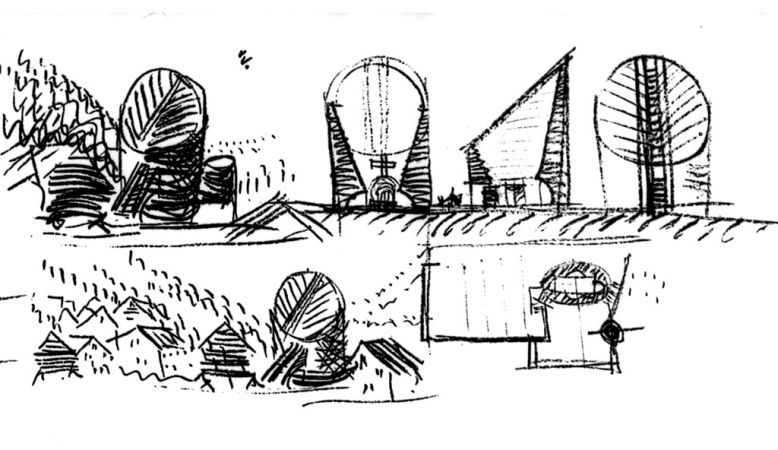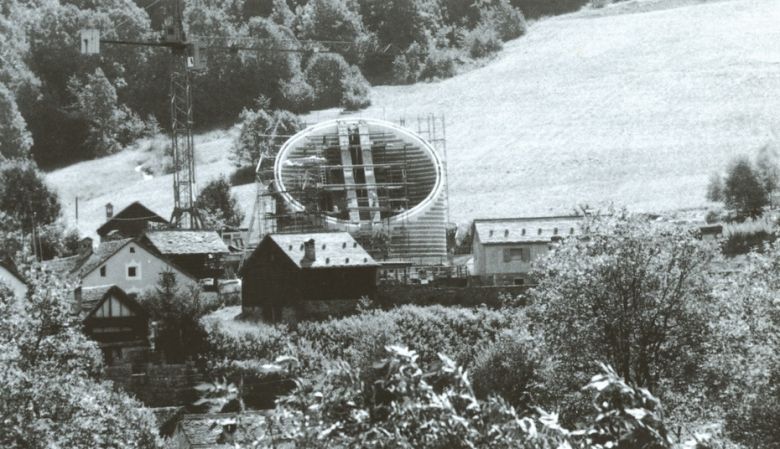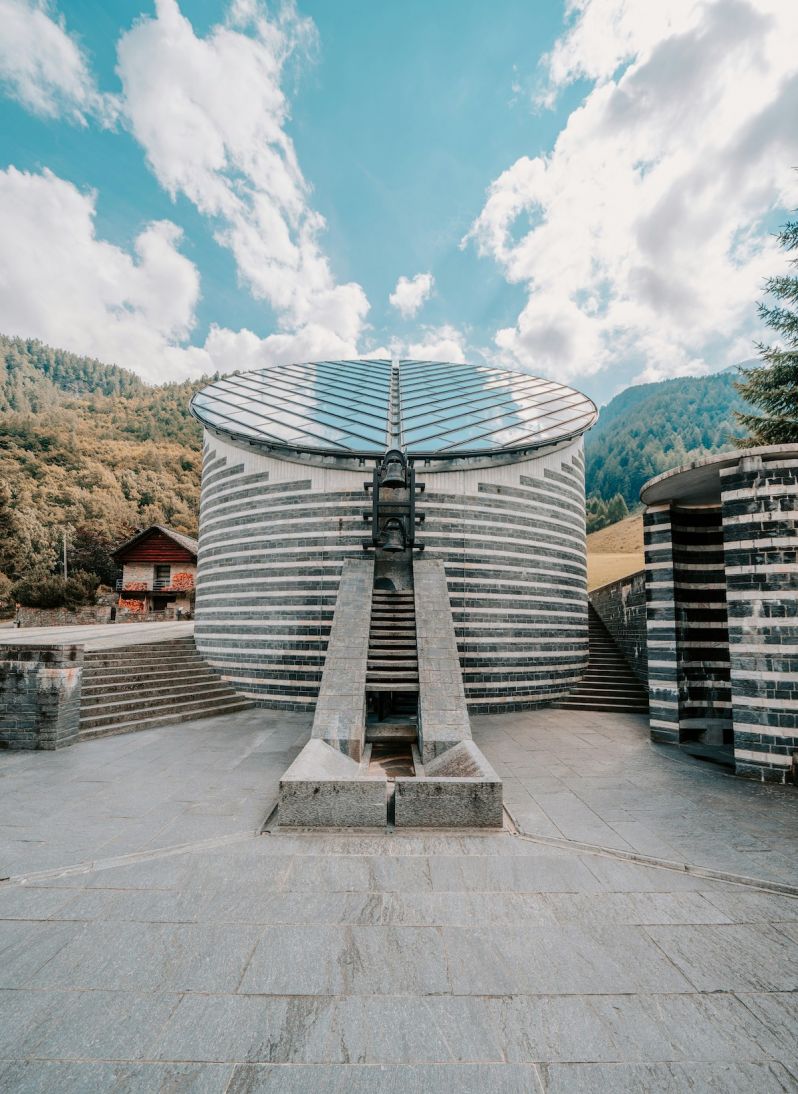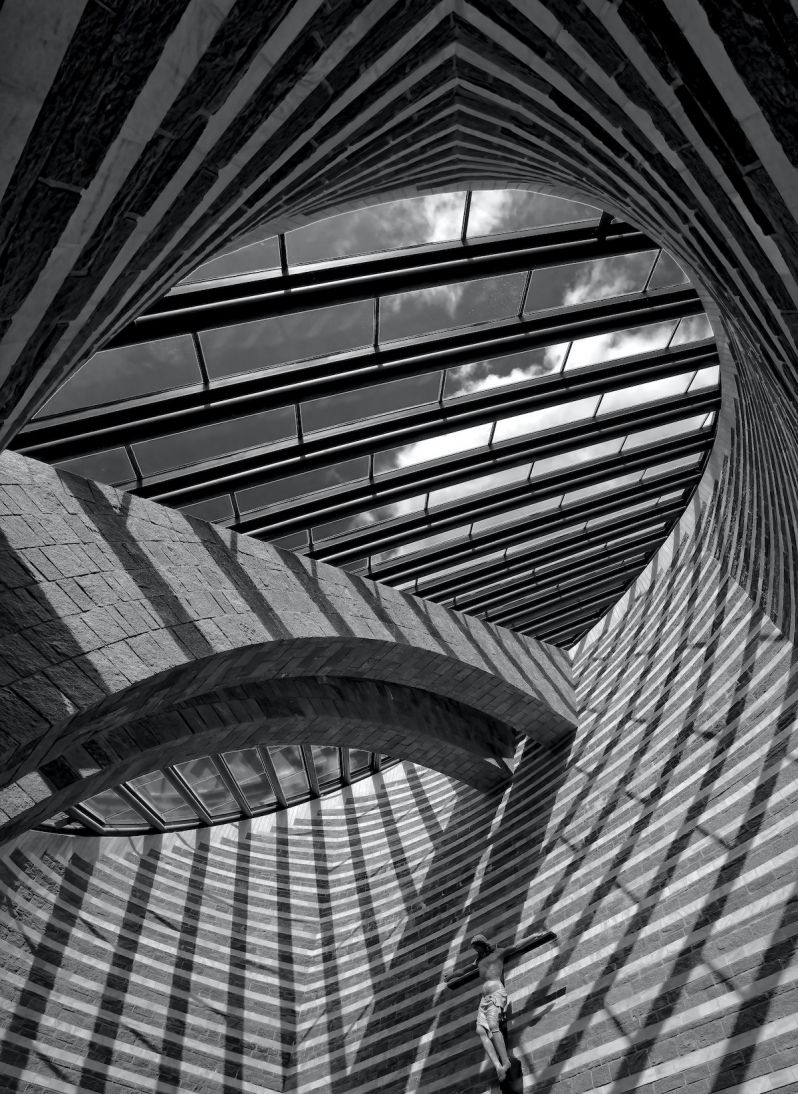JOIN the AFICIONADOS
Get the insider news and lowdown on what we've been up to, where we've been, and who we've met along the way. Be the first to discover new places and get the scoop on our favourites.
A landmark clad in alternating bands of grey Riveo granite and white Peccia marble, both of which are native to the region, cast the theatrical drama of this reformed place of worship by Swiss architect Mario Botta.
Villages at the foot of the Swiss Alps have been familiar with avalanches for centuries. In the tiny Alpine village of Mogno, in the Swiss canton of Ticino, a devastating avalanche struck on the morning of April 25th 1986, destroying the 17th-century church of San Giovanni Battista (Saint John the Baptist).
Fittingly, architect Mario Botta, who was born in Ticino, was appointed to erect a new church on the premises. It became a structure in his signature strong, geometric, towering style, completed in 1996.
Studying architecture in the Italian cities of Milan and Venice, Botta began his professional career working under giants of modernism such as Louis Kahn and Le Corbusier himself, whose religious buildings at Ronchamp, among others, influenced the goals of Botta.
Within the grand mountainous landscape, Botta’s church retains a human scale: it’s monumental yet quite modest in its proportions, reaching the same 17 metres of height as the destroyed church that stood here before. As a place of worship, it’s respectful of the nature surrounding it. The church makes a visitor reflect on his or her place in the world, thanks to its timeless shape and solitude-invoking aesthetics.
A departure from the traditional architecture of a church or cathedral, the church of San Giovanni Battista is made up of modern geometrical shapes: a cylinder, a rectangle, a circle.
Made of white marble and dark gneiss, locally sourced from the nearby Maggia Valley, the structure lets in light from above, through a glass roof, enhancing the spiritual atmosphere.




Within the immense landscape, the church acts as a link between the earth and the heavens. Its thick stone walls protect against a possible future calamity – as part of nature and the landscape, it seems to say in a wholly new language, that human presence and spirituality is here to stay.
The Museo di Arte Moderna e Contemporanea Rovereto - or thankfully MART for short - is one of Italy’s finest bastions of art, culture and architecture, also designed by architect Mario Botta.
With more than 20 years of existence, it’s definitely worth a detour if you are heading to Brücke 49 in Vals, to take in this uplifting specimen of sacred architecture.